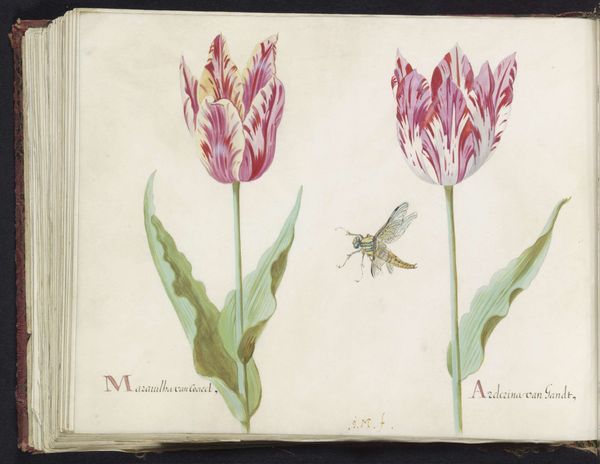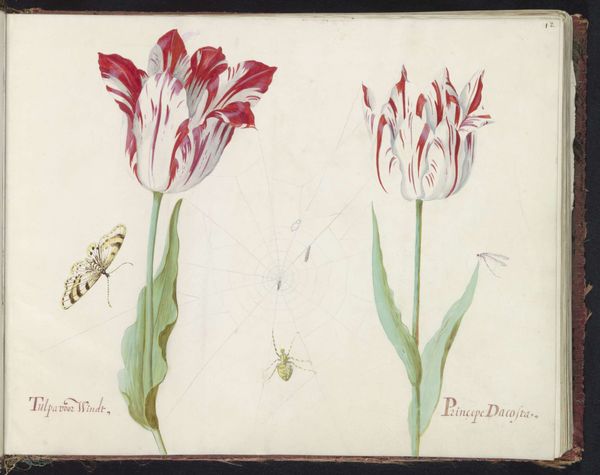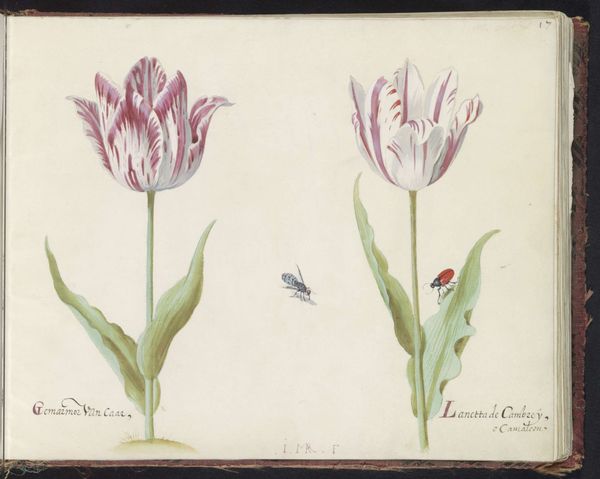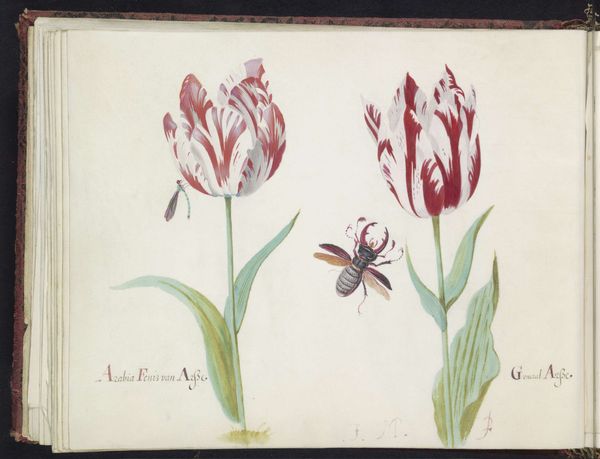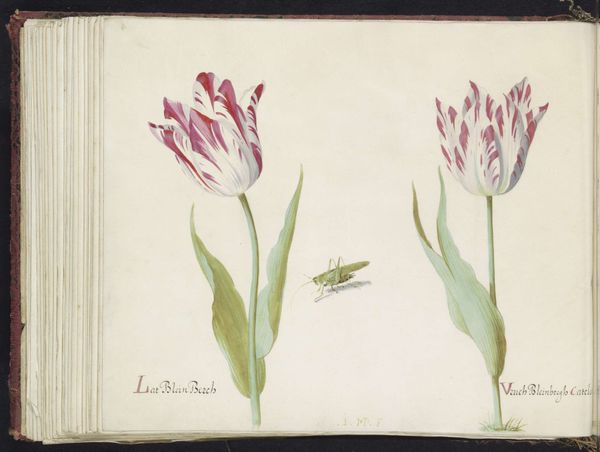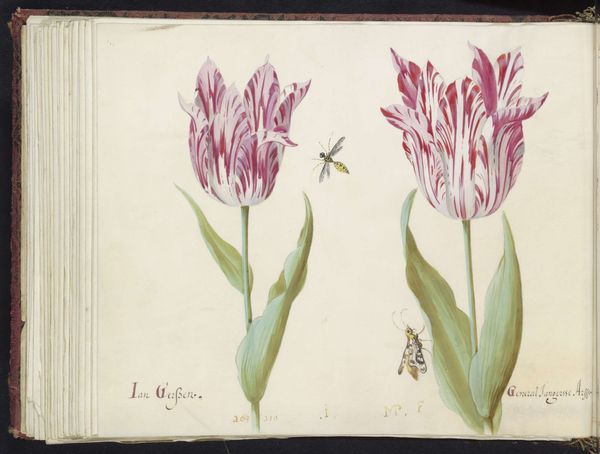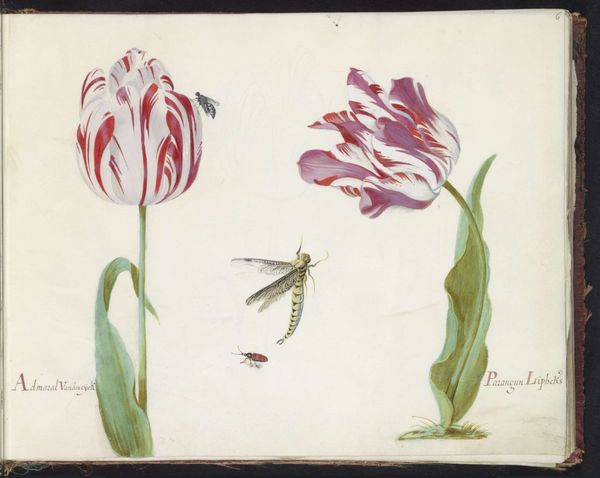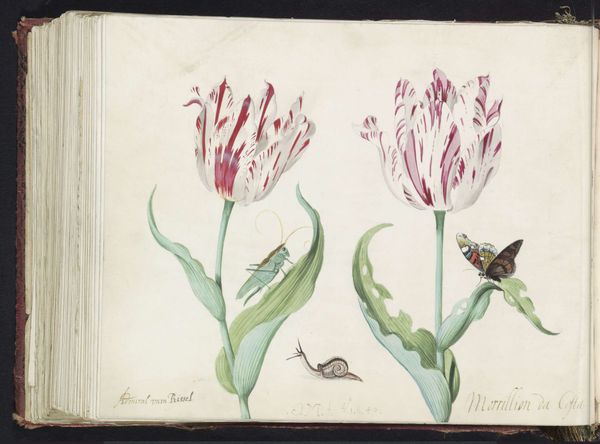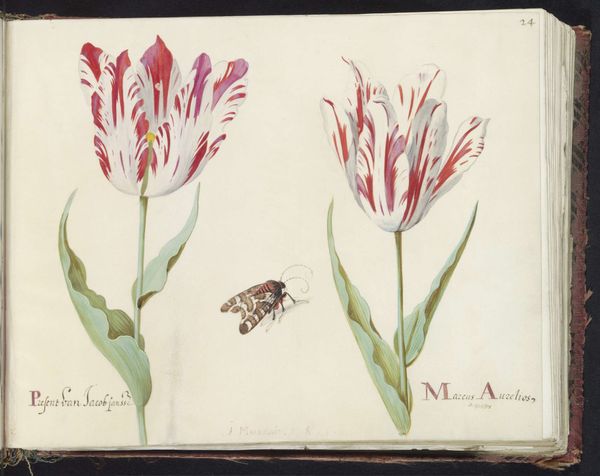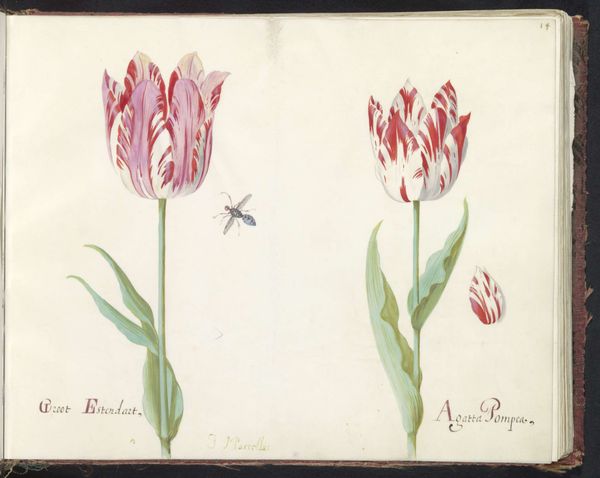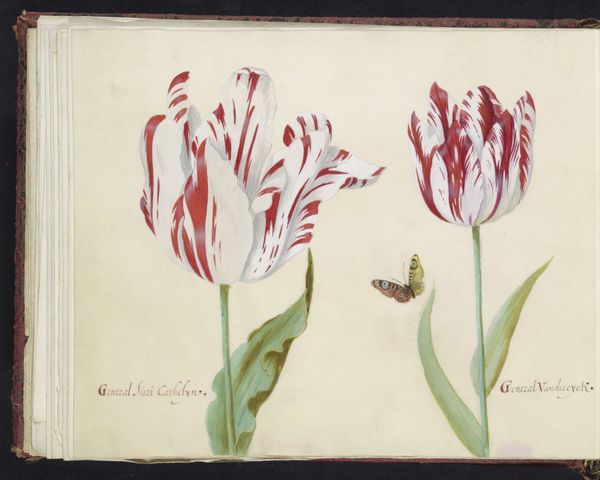
watercolor
#
dutch-golden-age
#
watercolor
#
coloured pencil
#
watercolour illustration
#
botanical art
#
watercolor
Dimensions: height 265 mm, width 335 mm
Copyright: Rijks Museum: Open Domain
Editor: This watercolor by Jacob Marrel, titled "Two Tulips with Dragonfly," dates back to 1637 and is held at the Rijksmuseum. The vibrant colours really strike me; they feel both delicate and rich. What do you see when you look at it? Curator: The structure itself intrigues me. Consider the contrasting placements of the tulips within the composition. We have the 'Amasel De Mari' tulip presented in the upper-left quadrant and 'General de Mari' positioned opposite, their mirroring, but not identical, shapes generating a balanced tension. Notice the acute rendering of their leaves – a skillful demonstration in capturing botanical forms using watercolour. What is your interpretation of how line weight is manipulated within the dragonfly? Editor: I see that the artist uses incredibly fine lines to depict the dragonfly’s wings, making them appear almost transparent, ethereal. The contrasting thicker strokes define its body. Does that contrast have a purpose? Curator: Precisely. The heavier line draws our eyes, creating a focal point and then diffusing into those delicate wings. This creates a dynamic contrast between structure and lightness, further activated by colour relationships and their symbolic potential in botanical renderings. I see a system where individual marks construct both form and symbolic intention within the artistic architecture. The negative space acts not just as a void, but as active component shaping perception and narrative within. Editor: I didn't see it that way at first, focusing on the beauty rather than the underlying composition, but looking closely, I can really appreciate those structural choices now. Curator: It’s in this delicate balance and refined execution of form where the artwork communicates on many levels.
Comments
No comments
Be the first to comment and join the conversation on the ultimate creative platform.

